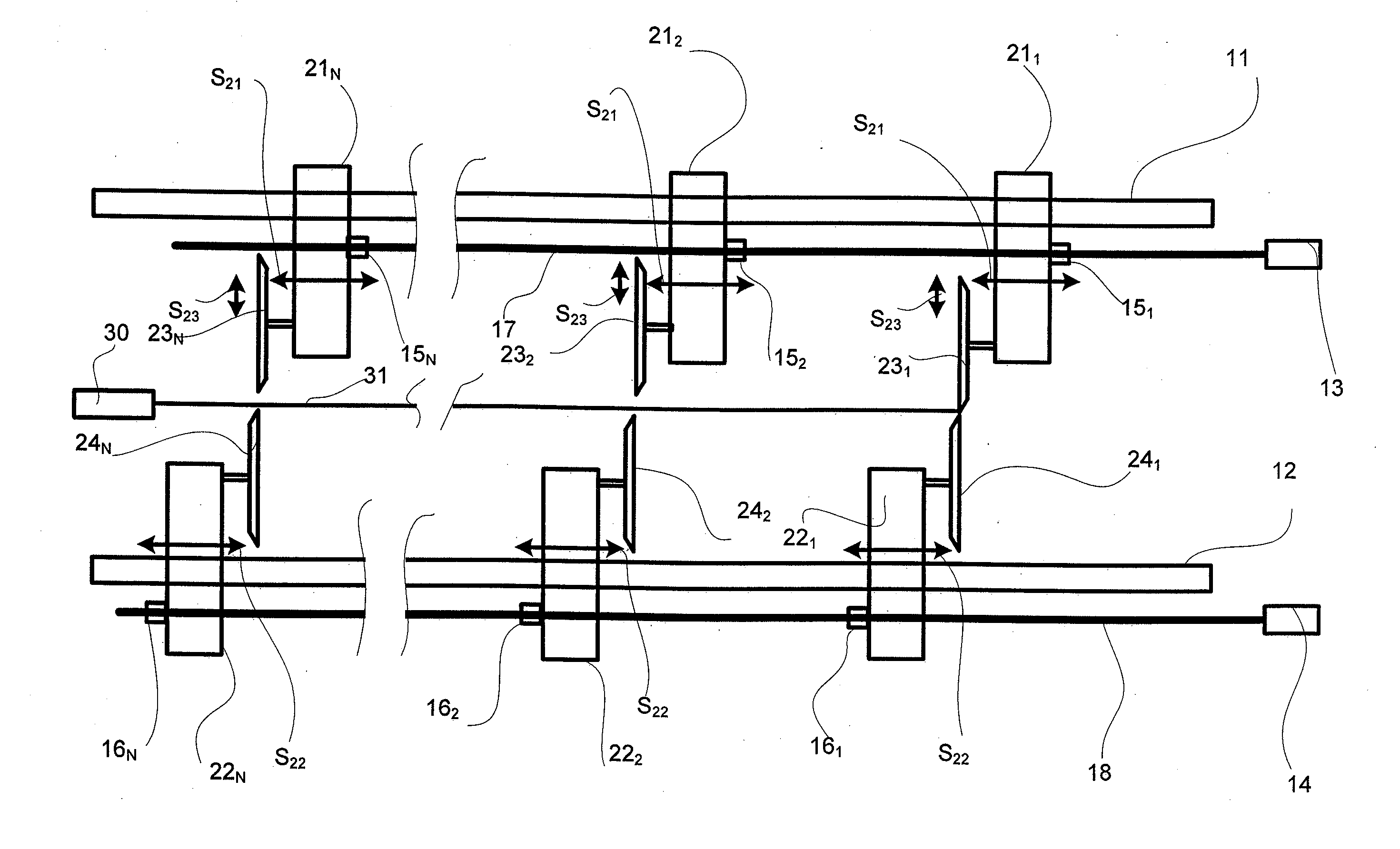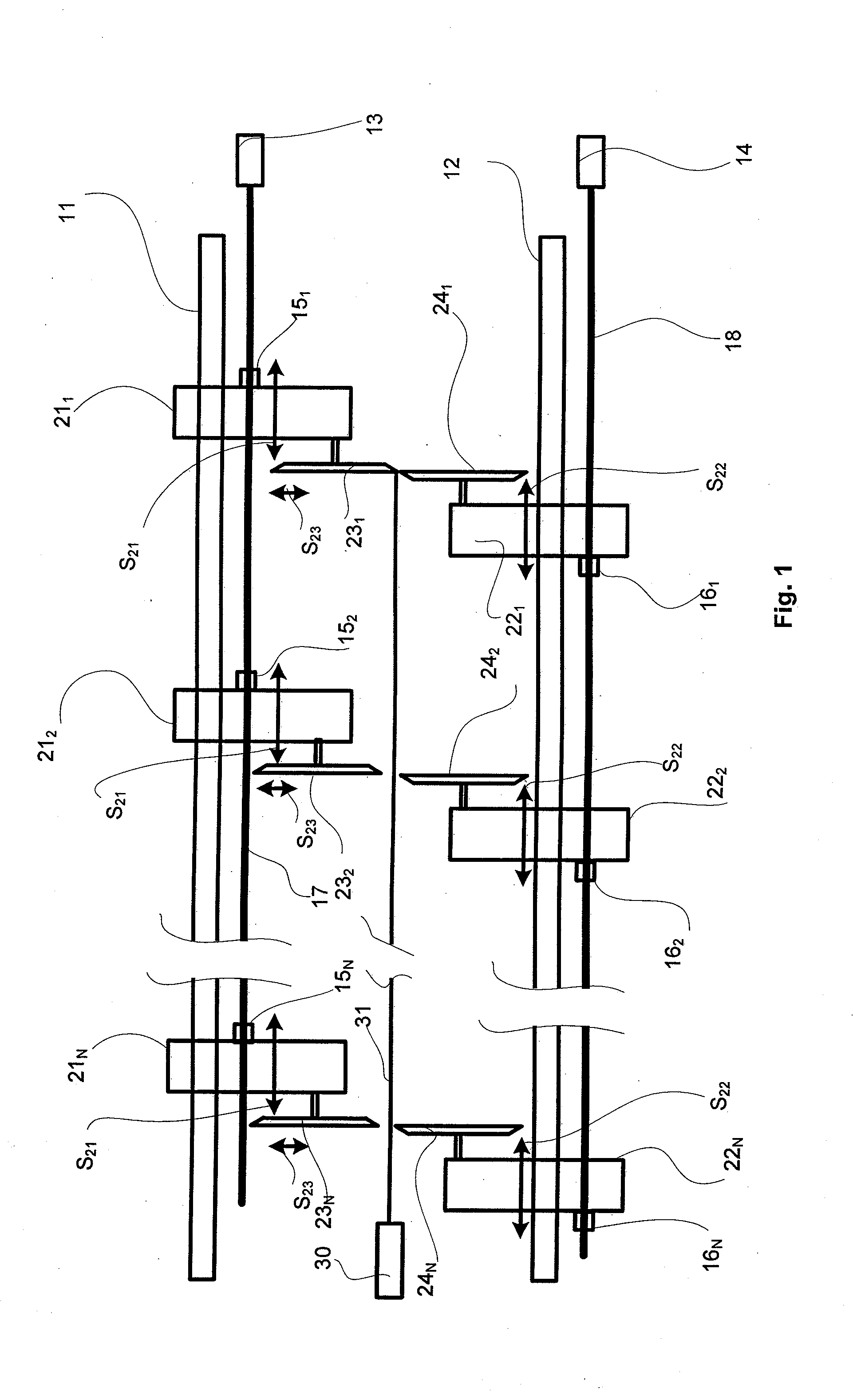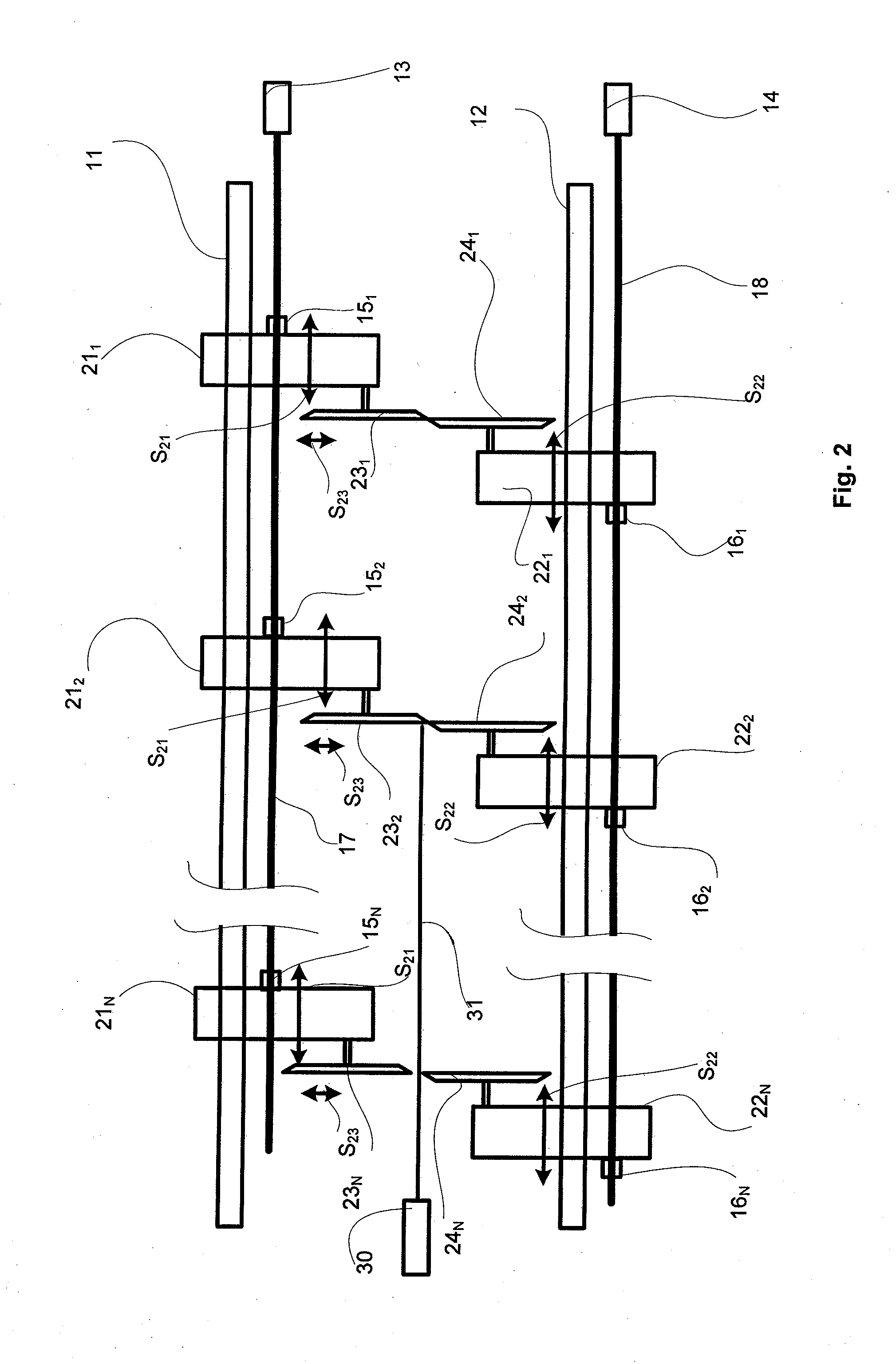Method for Calibrating the Position of the Slitter Blades of a Slitter-Winder
a technology of slitter blades and slitterwinders, which is applied in the direction of scientific instruments, measurement devices, instruments, etc., can solve the problems of slitter blade edge wear and other problems, and achieve the effect of convenient use and reliable operation methods
- Summary
- Abstract
- Description
- Claims
- Application Information
AI Technical Summary
Benefits of technology
Problems solved by technology
Method used
Image
Examples
Embodiment Construction
[0028]During the course of this description like numbers and signs will be used to identify like elements according to the different views which illustrate the invention.
[0029]FIGS. 1-3 show three of the top blades 231, 232, 23N and bottom 241, 242 2, 24N slitter blade pairs used in slitting. Typically there are 15-25 pairs of slitter blades in a slitter for slitting the fiber web longitudinally into partial webs in accordance with the desired widths of customer rolls (partial web rolls) to be produced in the slitter-winder. Each of the top slitter blades 231, 232, 23N is attached to a top slitter blade carriage 211, 212, 21N, correspondingly, which top slitter blade carriages 211, 212, 21N are arranged to be movable in a cross machine direction as shown by arrows S21 in relation to the travel direction i.e., the machine direction, of the web along an upper guide 11, and each of the bottom slitter blades 241, 242 2, 24N are attached to a bottom slitter blade carriage 221, 222, 22N, ...
PUM
 Login to View More
Login to View More Abstract
Description
Claims
Application Information
 Login to View More
Login to View More - R&D
- Intellectual Property
- Life Sciences
- Materials
- Tech Scout
- Unparalleled Data Quality
- Higher Quality Content
- 60% Fewer Hallucinations
Browse by: Latest US Patents, China's latest patents, Technical Efficacy Thesaurus, Application Domain, Technology Topic, Popular Technical Reports.
© 2025 PatSnap. All rights reserved.Legal|Privacy policy|Modern Slavery Act Transparency Statement|Sitemap|About US| Contact US: help@patsnap.com



